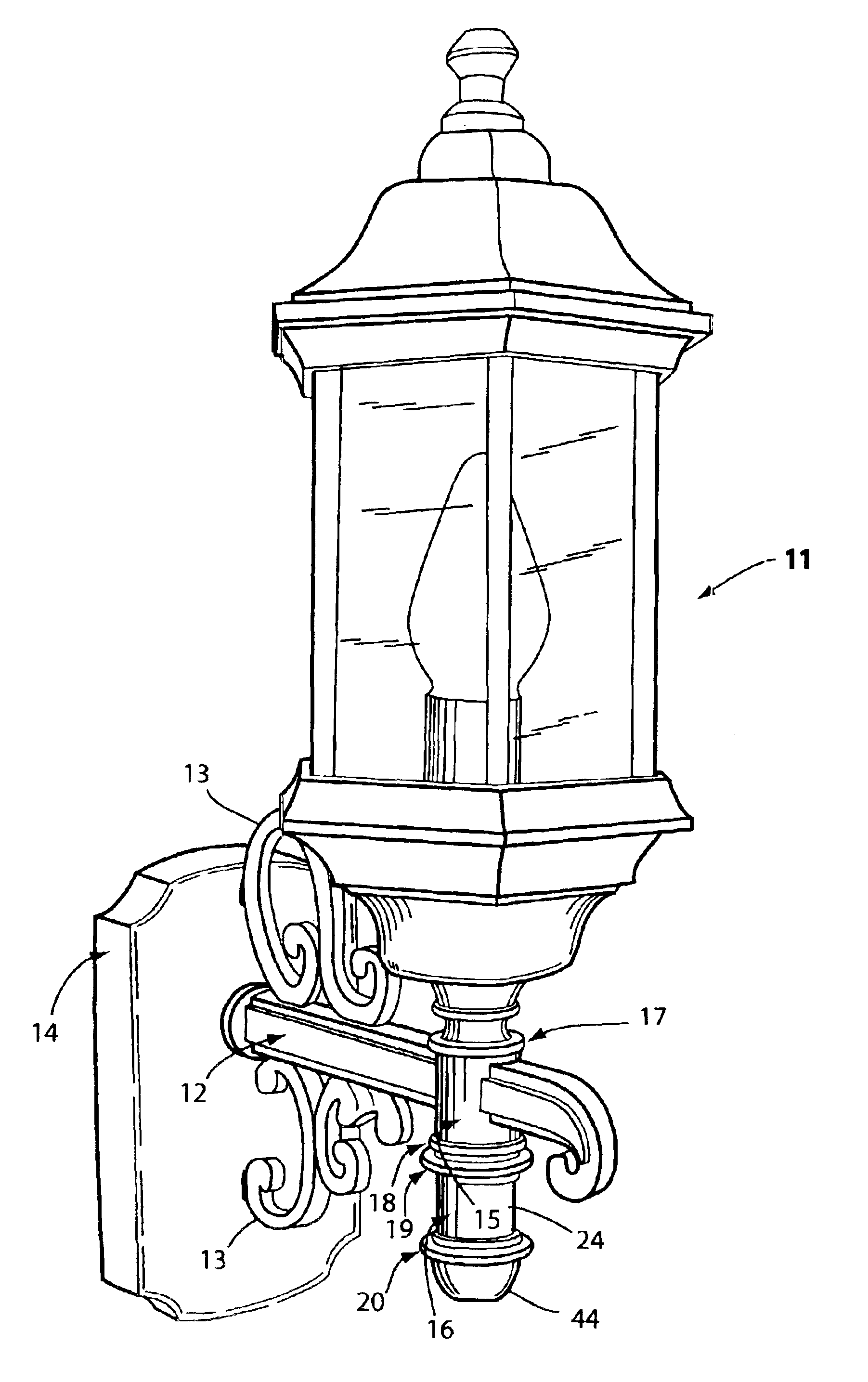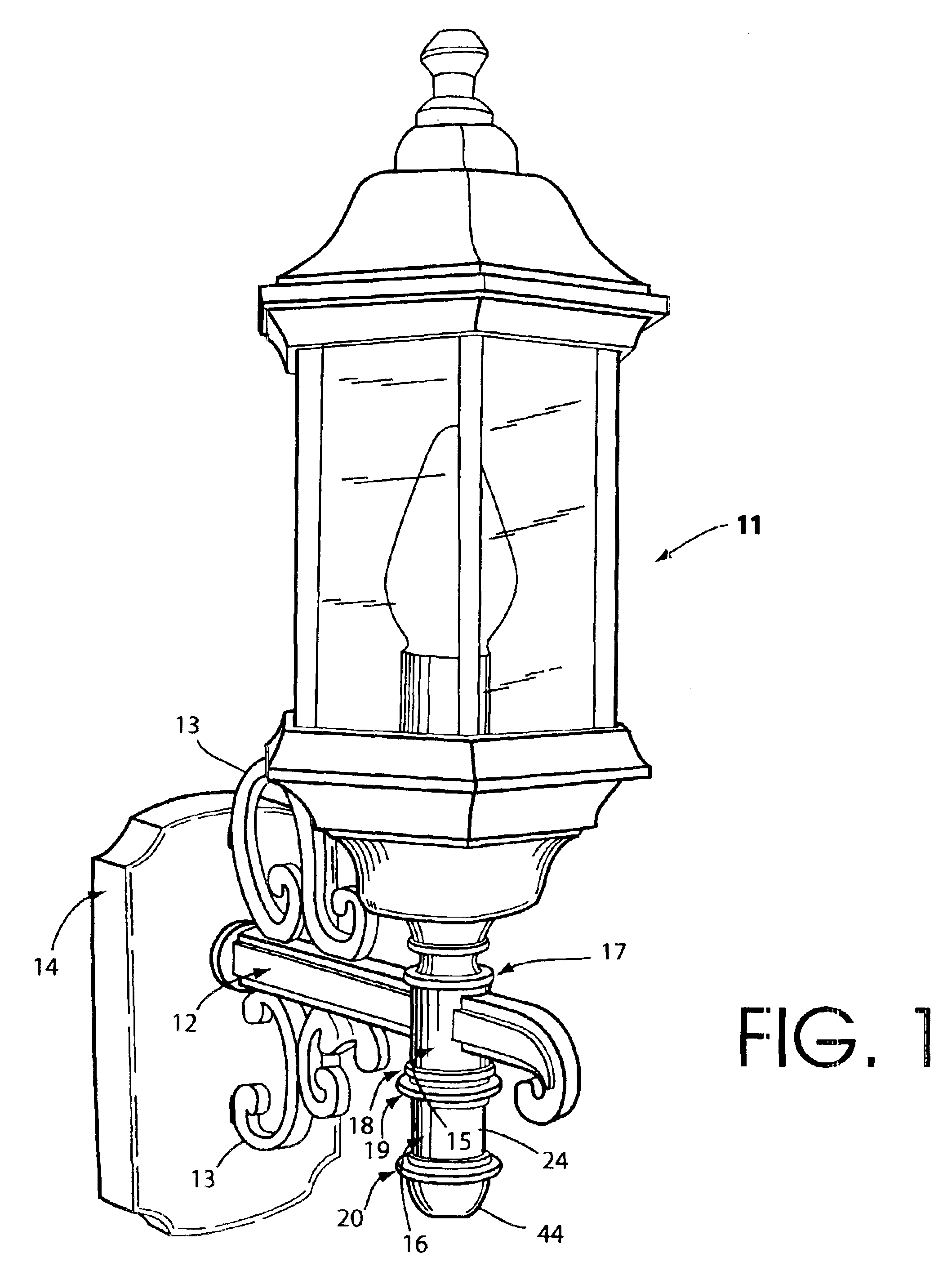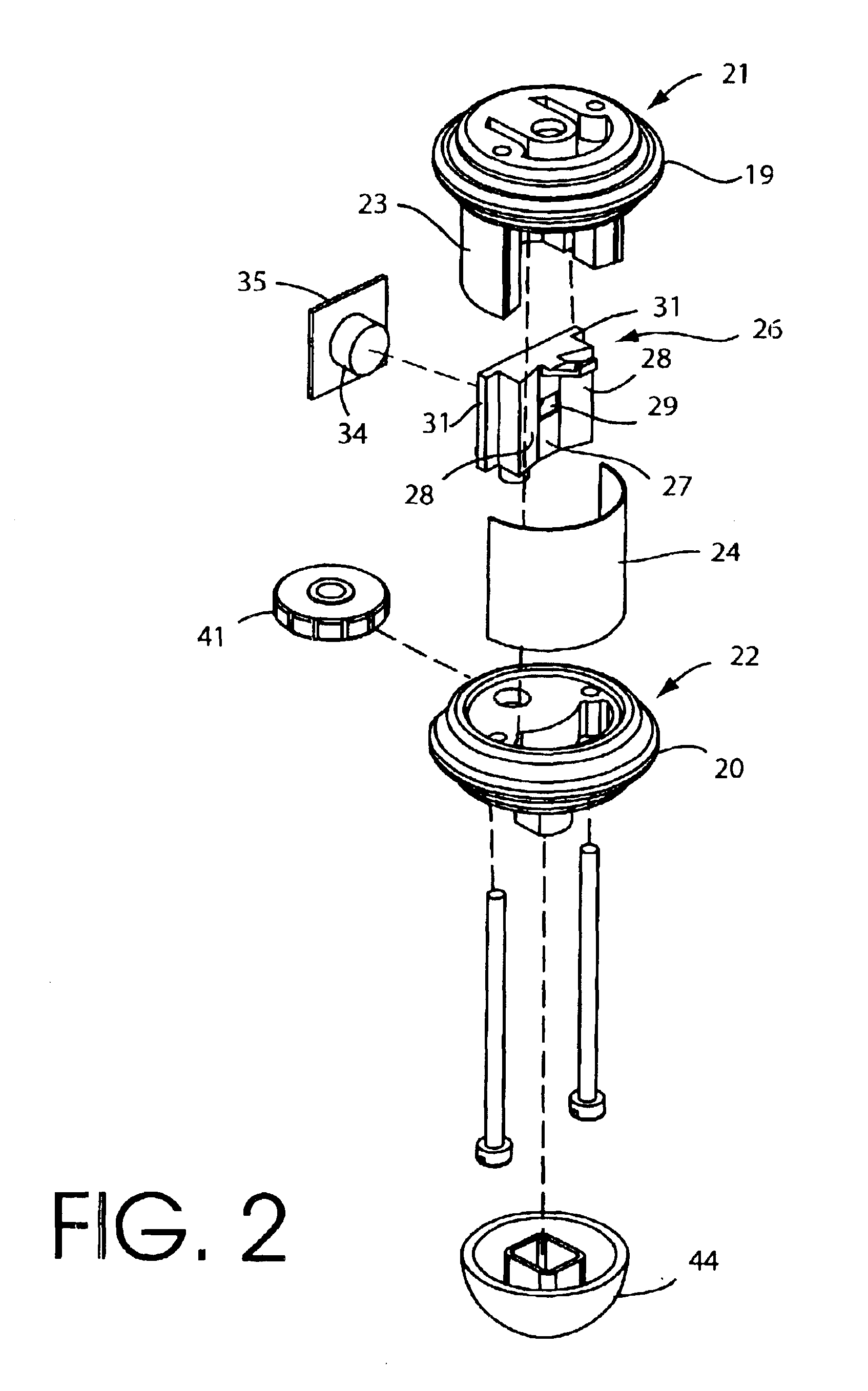PIR motion detector for a decorative lantern
a motion detector and lantern technology, applied in the field of passive infrared motion detectors, can solve the problems of not being able to use lantern styles with the backplate-mounted motion detector, not being able to adapt to the available lantern styles, and being big and bulky
- Summary
- Abstract
- Description
- Claims
- Application Information
AI Technical Summary
Benefits of technology
Problems solved by technology
Method used
Image
Examples
Embodiment Construction
[0018]FIG. 1 shows a decorative lighting fixture including a motion detector integrated into the lighting fixture in a completely inconspicuous manner so as not to degrade the stylistic integrity of the fixture. The lighting fixture includes a decorative lantern 11, a decorative support arm 12 with decorative embellishments 13 for supporting lantern 11, and a backplate or base 14 for mounting the lighting fixture on a wall. Support arm 12 is connected to the lantern through a decorative connective element 15. The lantern also includes a decorative assembly 16, which serves here as a motion detector housing.
[0019]The decorative assembly 16 illustrated in FIG. 1 is of the form of a small cylindrical element in the same general size and style as decorative connective element 15. The decorative elements 15 and 16 have an outside diameter on the order of a little over one inch (about one and one-eighth inch. The two elements 15 and 16 are adorned with decorative rings 17-20 so as to main...
PUM
 Login to View More
Login to View More Abstract
Description
Claims
Application Information
 Login to View More
Login to View More - R&D
- Intellectual Property
- Life Sciences
- Materials
- Tech Scout
- Unparalleled Data Quality
- Higher Quality Content
- 60% Fewer Hallucinations
Browse by: Latest US Patents, China's latest patents, Technical Efficacy Thesaurus, Application Domain, Technology Topic, Popular Technical Reports.
© 2025 PatSnap. All rights reserved.Legal|Privacy policy|Modern Slavery Act Transparency Statement|Sitemap|About US| Contact US: help@patsnap.com



